After searching hundreds of millions of objects across our sky, NASA's Wide-Field Infrared Survey Explorer (WISE) has turned up no evidence of the hypothesized celestial body in our solar system commonly dubbed 'Planet X'
Mar 7th, 2014
Read more
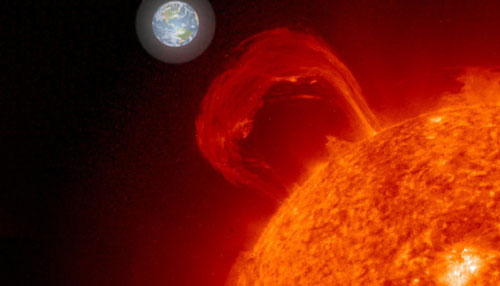 Scientists identify a plasma plume that naturally protects the Earth against solar storms.
Scientists identify a plasma plume that naturally protects the Earth against solar storms.
Mar 7th, 2014
Read more
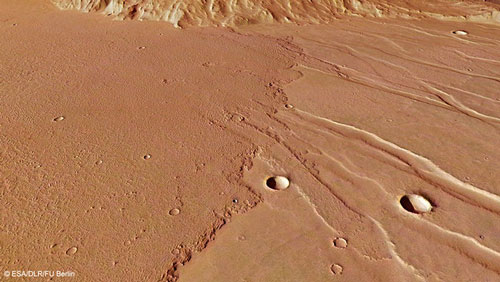 Two distinct volcanic eruptions have flooded this area of Daedalia Planum with lava, flowing around an elevated fragment of ancient terrain.
Two distinct volcanic eruptions have flooded this area of Daedalia Planum with lava, flowing around an elevated fragment of ancient terrain.
Mar 6th, 2014
Read more
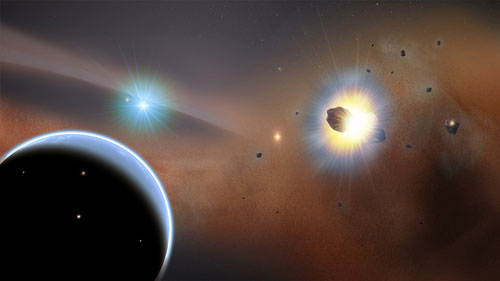 Astronomers using the Atacama Large Millimeter/submillimeter Array (ALMA) telescope have discovered the splattered remains of comets colliding together around a nearby star; the researchers believe they are witnessing the total destruction of one of these icy bodies once every five minutes.
Astronomers using the Atacama Large Millimeter/submillimeter Array (ALMA) telescope have discovered the splattered remains of comets colliding together around a nearby star; the researchers believe they are witnessing the total destruction of one of these icy bodies once every five minutes.
Mar 6th, 2014
Read more
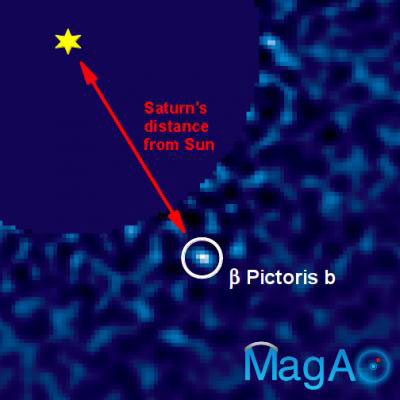 For the first time, astronomers have used the same imaging technology found in a digital camera to take a picture of a planet far from our solar system with an Earth-based telescope. The accomplishment is a small step toward the technology astronomers will need in order to characterize planets suitable for harboring life.
For the first time, astronomers have used the same imaging technology found in a digital camera to take a picture of a planet far from our solar system with an Earth-based telescope. The accomplishment is a small step toward the technology astronomers will need in order to characterize planets suitable for harboring life.
Mar 6th, 2014
Read more
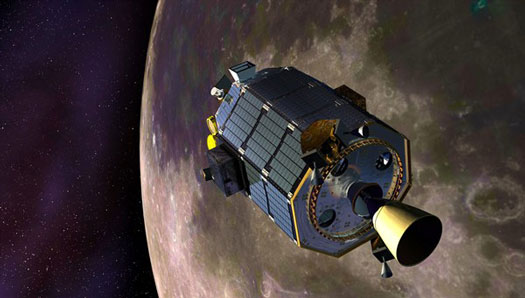 The signal was transmitted by the Lunar Lasercom Space Terminal (LLST) on board the NASA spacecraft Lunar Atmosphere and Dust Environment Explorer (LADEE), which has been orbiting the Moon since October 2013. This is the first time that an optical link has been analysed after a long passage through space.
The signal was transmitted by the Lunar Lasercom Space Terminal (LLST) on board the NASA spacecraft Lunar Atmosphere and Dust Environment Explorer (LADEE), which has been orbiting the Moon since October 2013. This is the first time that an optical link has been analysed after a long passage through space.
Mar 6th, 2014
Read more
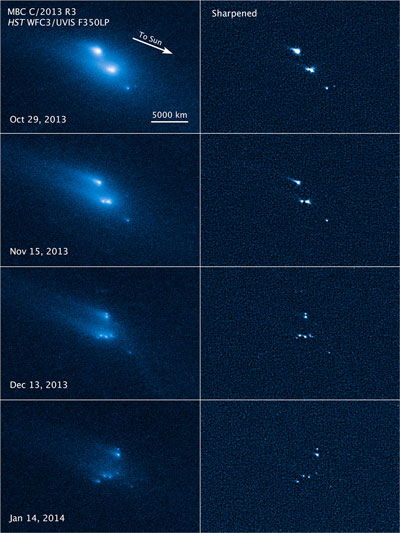 The Hubble Space Telescope has recorded the never-before-seen break-up of an asteroid into as many as 10 smaller pieces.
The Hubble Space Telescope has recorded the never-before-seen break-up of an asteroid into as many as 10 smaller pieces.
Mar 6th, 2014
Read more
GOSSS (Galactic O-Star Spectroscopic Survey) substantially improves on prior catalogues. It is a very ambitious project from the point of view of the number of objects and the quality of the data; it will yield a homogeneous sample, with data from both hemispheres which will be constantly updated, so it will be a very solid tool.
Mar 6th, 2014
Read more
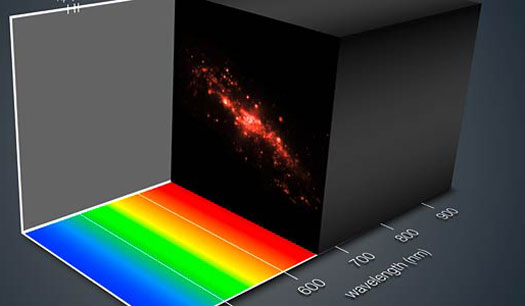 A new innovative instrument called MUSE (Multi Unit Spectroscopic Explorer) has been successfully installed on ESO's Very Large Telescope (VLT) at the Paranal Observatory in northern Chile. MUSE has observed distant galaxies, bright stars and other test targets during the first period of very successful observations.
A new innovative instrument called MUSE (Multi Unit Spectroscopic Explorer) has been successfully installed on ESO's Very Large Telescope (VLT) at the Paranal Observatory in northern Chile. MUSE has observed distant galaxies, bright stars and other test targets during the first period of very successful observations.
Mar 5th, 2014
Read more
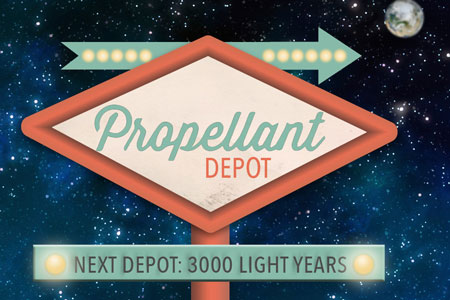 MIT team proposes storing extra rocket fuel in space for future missions.
MIT team proposes storing extra rocket fuel in space for future missions.
Mar 5th, 2014
Read more
Astronomers have developed a new method of gauging the atmospheric pressure of exoplanets, or worlds beyond the solar system, by looking for a certain type of molecule.
Mar 4th, 2014
Read more
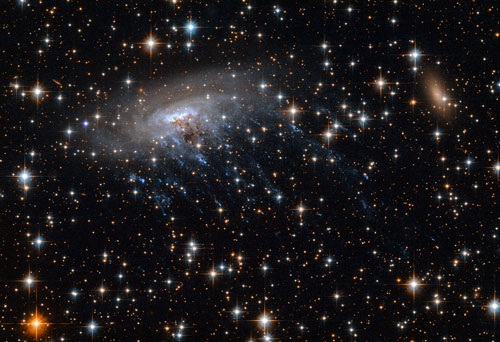 This new Hubble image shows spiral galaxy ESO 137-001, framed against a bright background as it moves through the heart of galaxy cluster Abell 3627. This cluster is violently ripping the spiral's entrails out into space, leaving bright blue streaks as telltale clues to this cosmic crime.
This new Hubble image shows spiral galaxy ESO 137-001, framed against a bright background as it moves through the heart of galaxy cluster Abell 3627. This cluster is violently ripping the spiral's entrails out into space, leaving bright blue streaks as telltale clues to this cosmic crime.
Mar 4th, 2014
Read more
Three new planets classified as habitable-zone super-Earths are amongst eight new planets discovered orbiting nearby red dwarf stars by an international team of astronomers from the UK and Chile.
Mar 4th, 2014
Read more
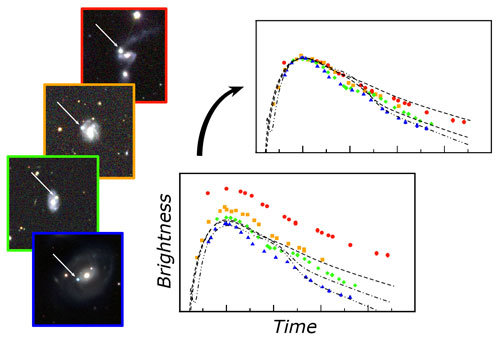 The Nearby Supernova Factory based at Berkeley Lab shows that Type Ia supernovae have a surprisingly large range of masses.
The Nearby Supernova Factory based at Berkeley Lab shows that Type Ia supernovae have a surprisingly large range of masses.
Mar 3rd, 2014
Read more
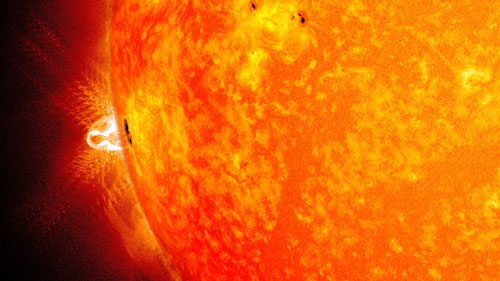 A giant sunspot - a magnetically strong and complex region on the sun's surface - has just appeared over the sun's horizon. This is the third trip for this region across the face of the sun, which takes approximately 27 days to make a complete rotation.
A giant sunspot - a magnetically strong and complex region on the sun's surface - has just appeared over the sun's horizon. This is the third trip for this region across the face of the sun, which takes approximately 27 days to make a complete rotation.
Feb 28th, 2014
Read more
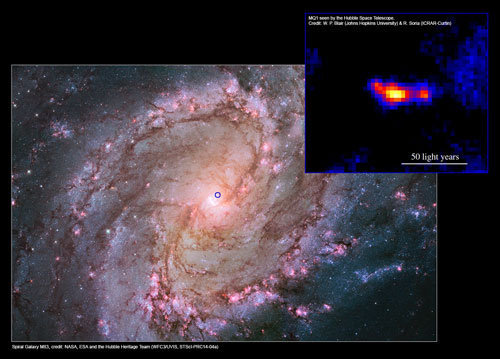 A team of Australian and American astronomers have been studying nearby galaxy M83 and have found a new superpowered small black hole, named MQ1, the first object of its kind to be studied in this much detail.
A team of Australian and American astronomers have been studying nearby galaxy M83 and have found a new superpowered small black hole, named MQ1, the first object of its kind to be studied in this much detail.
Feb 28th, 2014
Read more
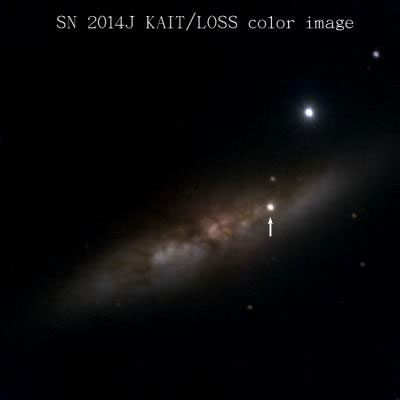 The closest and brightest supernova in decades, SN 2014J, brightens faster than expected for Type Ia supernovae, the exploding stars used to measure cosmic distances, according to University of California Berkeley astronomers.
The closest and brightest supernova in decades, SN 2014J, brightens faster than expected for Type Ia supernovae, the exploding stars used to measure cosmic distances, according to University of California Berkeley astronomers.
Feb 27th, 2014
Read more
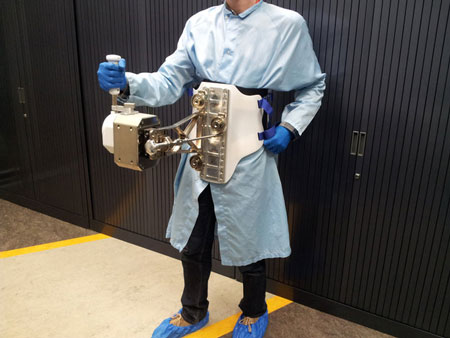 Stowed inside ESA's next supply ship to the International Space Station will be one of the most advanced joysticks ever built, designed to test the remote control of robots on the ground from up in orbit.
Stowed inside ESA's next supply ship to the International Space Station will be one of the most advanced joysticks ever built, designed to test the remote control of robots on the ground from up in orbit.
Feb 26th, 2014
Read more

 Subscribe to our Space Exploration News feed
Subscribe to our Space Exploration News feed












